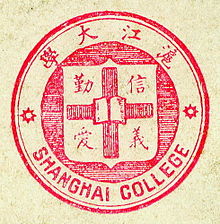
Hearing loss exists when there is diminished sensitivity to the sounds normally heard.The terms hearing impairment or hard of hearing are usually reserved for people who have relative insensitivity to sound in the speech frequencies. The severity of a hearing loss is categorized according to the increase in volume above the usual level necessary before the listener can detect it.
Deafness is defined as a degree of loss such that a person is unable to understand speech even in the presence of amplification. In profound deafness, even the loudest sounds produced by an audiometer (an instrument used to measure hearing by producing pure tone sounds through a range of frequencies) may not be detected. In total deafness, no sounds at all, regardless of amplification or method of production, are heard.
Speech perception
Another aspect of hearing involves the perceived clarity of a sound rather than its amplitude. In humans, that aspect is usually measured by tests of speech perception. These tests measure one's ability to understand speech, not to merely detect sound. There are very rare types of hearing loss which affect speech understanding alone.Causes
Hearing loss has multiple causes, including ageing, genetics and injury.
Age
There is a progressive loss of ability to hear high frequencies with ageing known as presbycusis. For men, this can start as early as 25 and women at 30, but may even affect teenagers and children. Although genetically variable it is a normal concomitant of ageing and is distinct from hearing losses caused by noise exposure, toxins or disease agents. The National Institute for Occupational Safety and Health (NIOSH) recognizes that the majority of hearing loss is not due to age, but due to noise exposure. While everyone loses hearing with age, the amount and type of hearing lost is variable. By correcting for age in assessing hearing, one tends to overestimate the hearing loss due to noise for some and underestimate it for others.
Noise
Main article: Noise-induced hearing loss
Noise is the cause of approximately half of all cases of hearing loss, causing some degree of problems in 5% of the population globally. The World Health Organization estimates that half of those between 12 and 35 are at risk from using personal audio devices that are too loud.Populations living near airports or freeways are exposed to levels of noise typically in the 65 to 75 dB(A) range. If lifestyles include significant outdoor or open window conditions, these exposures over time can degrade hearing. The U.S. EPA have set noise standards. The EPA has identified the level of 70 dB(A) for 24‑hour exposure as the level necessary to protect the public from hearing loss and other disruptive effects from noise, such as sleep disturbance, stress-related problems, learning detriment, etc. (EPA, 1974).
Noise-induced hearing loss (NIHL) is typically centered at 3000, 4000, or 6000 Hz. As noise damage progresses, damage spreads to affect lower and higher frequencies. On an audiogram, the resulting configuration has a distinctive notch, sometimes referred to as a "noise notch." As aging and other effects contribute to higher frequency loss (6–8 kHz on an audiogram), this notch may be obscured and entirely disappear.
Louder sounds cause damage in a shorter period of time. Estimation of a "safe" duration of exposure is possible using an exchange rate of 3 dB. As 3 dB represents a doubling of intensity of sound, duration of exposure must be cut in half to maintain the same energy dose. For example, the "safe" daily exposure amount at 85 dB A, known as an exposure action value, is 8 hours, while the "safe" exposure at 91 dB(A) is only 2 hours (National Institute for Occupational Safety and Health, 1998). Note that for some people, sound may be damaging at even lower levels than 85 dB A. Exposures to other ototoxins (such as pesticides, some medications including chemotherapy agents, solvents, etc.) can lead to greater susceptibility to noise damage, as well as causing their own damage. This is called a synergistic interaction.
Some American health and safety agencies (such as the Occupational Safety and Health Administration, and the Mine Safety and Health Administration), use an exchange rate of 5 dB.[17] While this exchange rate is simpler to use, it drastically underestimates the damage caused by very loud noise. For example, at 115 dB, a 3 dB exchange rate would limit exposure to about half a minute; the 5 dB exchange rate allows 15 minutes.
Many people are unaware of the presence of environmental sound at damaging levels, or of the level at which sound becomes harmful. Common sources of damaging noise levels include car stereos, children's toys, motor vehicles, crowds, lawn and maintenance equipment, power tools, gun use, musical instruments, and even hair dryers. Noise damage is cumulative; all sources of damage must be considered to assess risk. If one is exposed to loud sound (including music) at high levels or for extended durations (85 dB A or greater), then hearing loss will occur. Sound levels increase with proximity; as the source is brought closer to the ear, the sound level increases.
In the USA, 12.5% of children aged 6–19 years have permanent hearing damage from excessive noise exposure.
Hearing loss has been described as primarily a condition of modern society. In preindustrial times, humans had far less exposure to loud sounds and deafness appears to have been a rare condition. Military service in World War II, the Korean War, and the Vietnam War, has likely also caused hearing loss in large numbers of men from those generations, though proving hearing loss was a direct result of military service is problematic without entry and exit audiograms.








